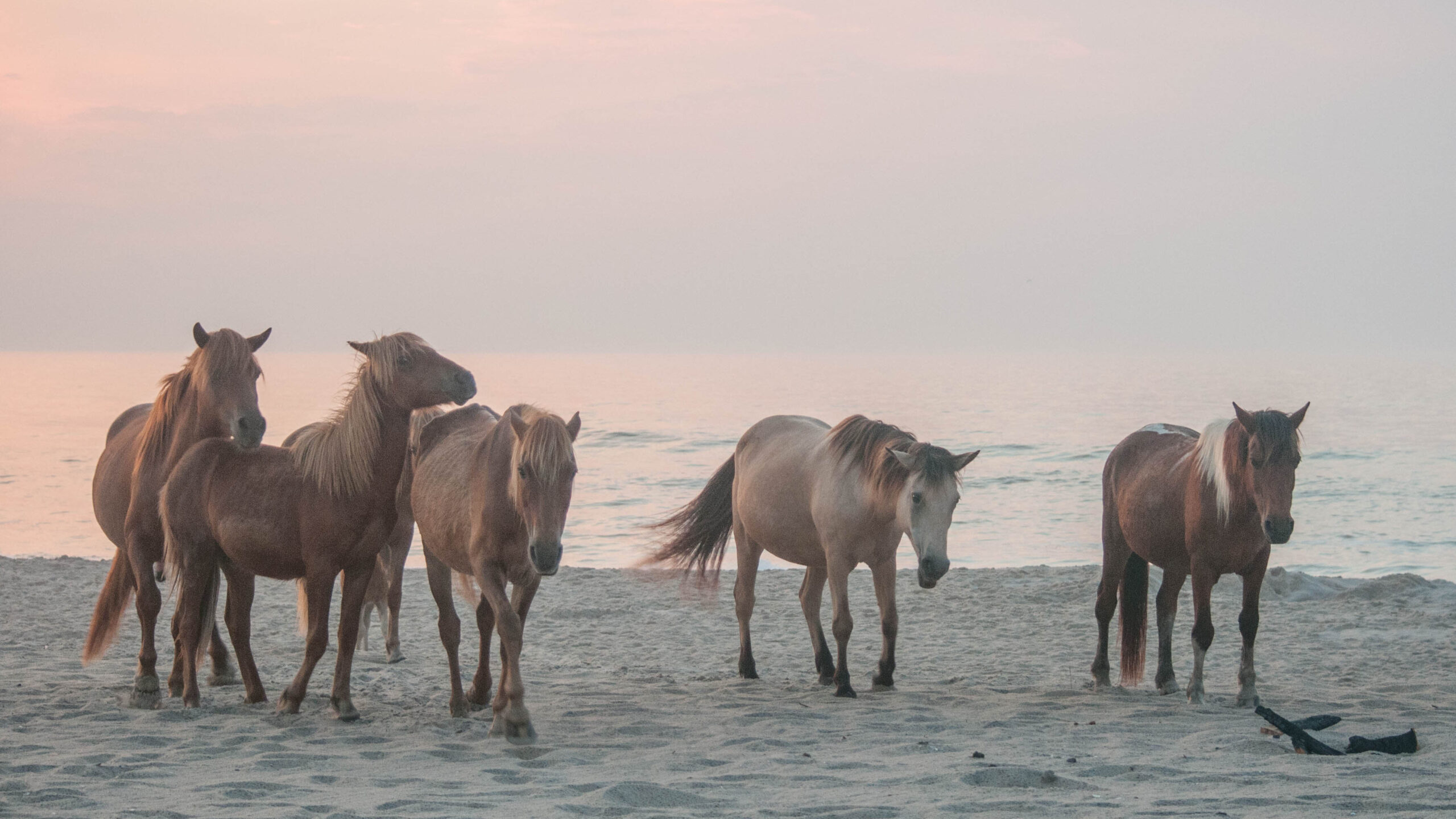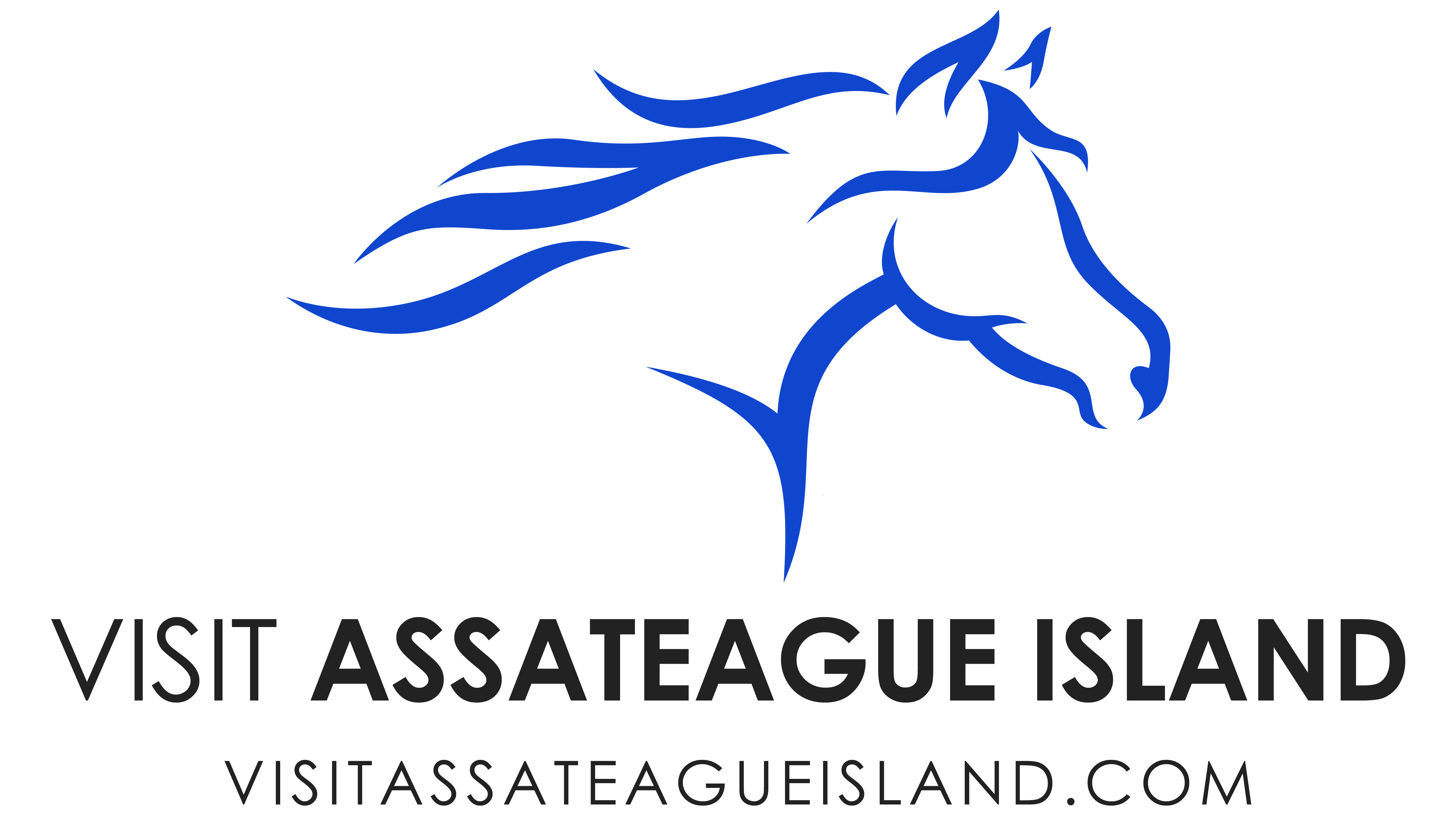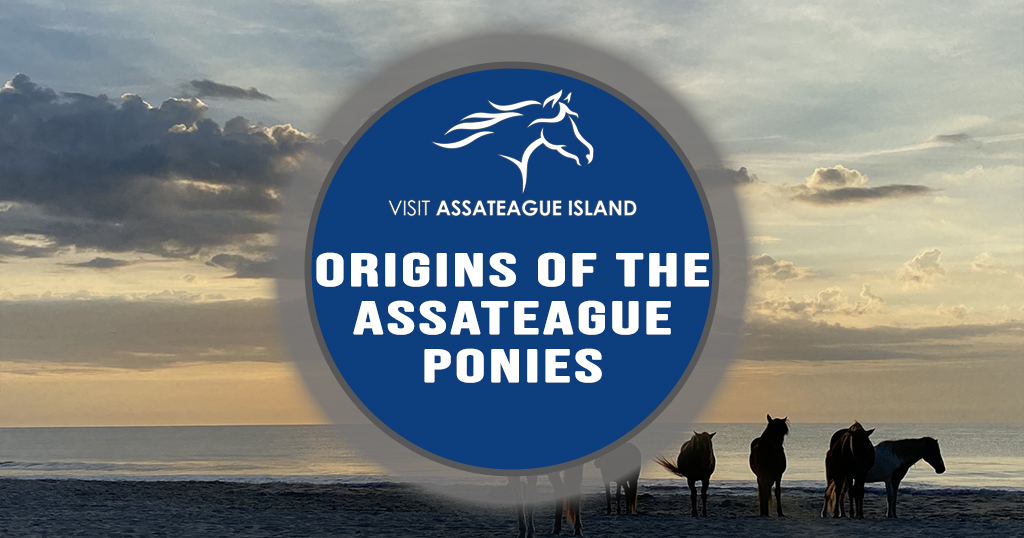The horses on Assateague Island are an obsession of many, and for good reason. Despite being smaller in stature compared to their mainland equine counterparts, these horses are beautiful, resilient, strong and wild. They have withstood hurricanes, nor’easters, harsh Winters and Summers and learned to adapt with a diet consisting mainly of salty marsh grass. Many visitors that come to the island ask, “How did the ponies get here?”
There are two different theories on the origin of the horses landing on Assateague Island. The first is that a Spanish galleon carrying horses became shipwrecked off the coast of Assateague in 1650, and the horses swam to safety on the shores of Assateague. The second theory is that farmers on the mainland wanted to avoid the high cost of livestock taxes and fencing laws and released their domesticated horses onto the island where they evolved to the feral creatures we find today.

While the National Park Service still seems to take the stance that the “most plausible” explanation is that mainland farmers released the horses, a recent (2022) scientific discovery in Florida revealed that the DNA from a horse molar fragment from 16th century Spanish ruins in Puerto Real, Haiti was closely related to the DNA of the Assateague ponies (source: National Geographic).
While it’s impossible to get to the bottom of this mystery due to lack of written records, we found in our own research that there does seem to be a lot more recent evidence pointing to the Spanish origins of our beloved island horses. A man by the name of John Amrhein Jr. dedicated a great portion of his life to researching Spanish shipwrecks off the Atlantic coast found compelling evidence of a particular shipwreck called the La Galga that may have carried the horses to the island. While the shipwreck occurred in 1750, due to the erosion and constant shift of Assateague Island towards the ocean, Amrhein believes that the ship lies beneath the marshes on Assateague Island. His book, “The Hidden Galleon” is a fascinating read for anyone interested in the history and legends of Assateague Island.
Whether you believe that the current herd on Assateague are descendants of colonial livestock or if their ancestors really did swim to safety from a Spanish shipwreck, one common ground that everyone can agree on is that these animals are wild and should remain this way. Please do your part when visiting the island. Store your food safely in a locked container, in your vehicle or in your tent or camper. Do not approach the horses – always remain a safe distance of at least 40 feet, which is a bus length’s away. Do not attempt to feed or touch the horses. There is a popular saying within the island’s educational pamphlets and signs: “A fed horse is a dead horse.” Please do your part to keep these horses wild as they have been for centuries and hopefully will remain for centuries to come.


